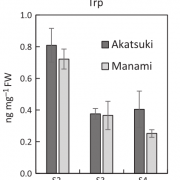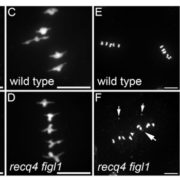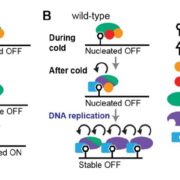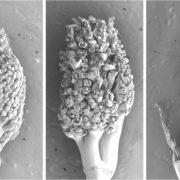Review: Applications of CRISPR–Cas in agriculture and plant biotechnology (Nature Rev. Mol. Cell Biol.)
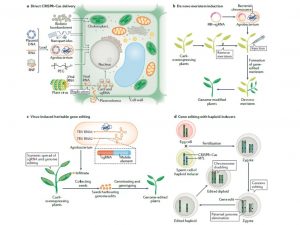 This week’s announcement of the Nobel Prize in Chemistry being awarded to Emmanuelle Charpentier and Jennifer A. Doudna “for the development of a method for genome editing” comes as no surprise to many. CRISPR (clustered regularly interspaced short palindromic repeats)– Cas (CRISPR-associated protein) is a phage immunity system in archaea and bacteria. The system is used to induce a DNA double-strand break (DSB) at a target site and this technology has revolutionized genetic manipulation of crops by targeted and precise editing of the genome. This review by Zhu et al. discusses the state of the art of this technology. CRISPR–Cas technology can give rise to new genotypes by deletion of negative elements that are responsible for traits that are harmful to the plant and it can be used for introducing mutation at targeted sites that can help the plant gain functions. Some of the examples discussed are yield increase in rice by editing C terminus of Oryza sativa LOGL5, which encodes a cytokinin-activation enzyme, increasing quality of wheat by targeting conserved regions of gluten genes and developing gluten free wheat, induction of disease resistance in rice by mutating the promoter region of O. sativa SWEET11 which can give resistance to X. oryzae pv. Oryzae. Plant breeding application in generating male sterility and haploid induction is also discussed, as is its use in accelerating the domestication of crops like quinoa and wheatgrass. Future prospects will include new methods of delivery and organelle genome editing. (Summary by Arun K. Shanker @arunshanker) Nature Rev. Mol. Cell Biol. 10.1038/s41580-020-00288-9
This week’s announcement of the Nobel Prize in Chemistry being awarded to Emmanuelle Charpentier and Jennifer A. Doudna “for the development of a method for genome editing” comes as no surprise to many. CRISPR (clustered regularly interspaced short palindromic repeats)– Cas (CRISPR-associated protein) is a phage immunity system in archaea and bacteria. The system is used to induce a DNA double-strand break (DSB) at a target site and this technology has revolutionized genetic manipulation of crops by targeted and precise editing of the genome. This review by Zhu et al. discusses the state of the art of this technology. CRISPR–Cas technology can give rise to new genotypes by deletion of negative elements that are responsible for traits that are harmful to the plant and it can be used for introducing mutation at targeted sites that can help the plant gain functions. Some of the examples discussed are yield increase in rice by editing C terminus of Oryza sativa LOGL5, which encodes a cytokinin-activation enzyme, increasing quality of wheat by targeting conserved regions of gluten genes and developing gluten free wheat, induction of disease resistance in rice by mutating the promoter region of O. sativa SWEET11 which can give resistance to X. oryzae pv. Oryzae. Plant breeding application in generating male sterility and haploid induction is also discussed, as is its use in accelerating the domestication of crops like quinoa and wheatgrass. Future prospects will include new methods of delivery and organelle genome editing. (Summary by Arun K. Shanker @arunshanker) Nature Rev. Mol. Cell Biol. 10.1038/s41580-020-00288-9


